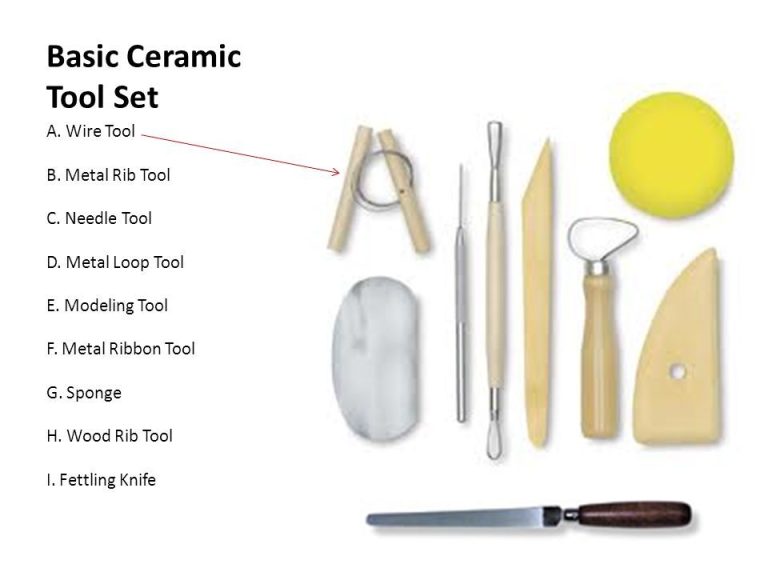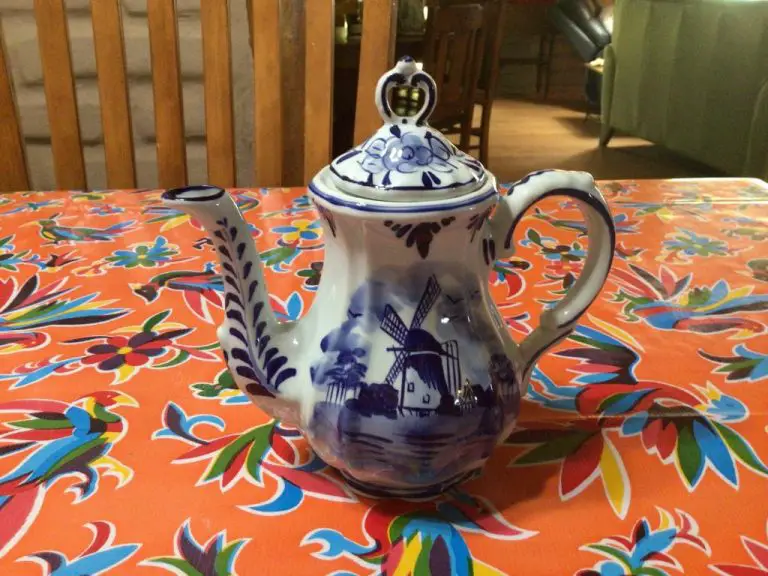Why Is Georgia Clay So Red?
Georgia’s red clay is a defining characteristic of the state’s landscape. The rich, deep crimson color of the soil is unique and contributes to the region’s distinctive charm. Red clay can be found across much of the state, making it an iconic part of the geography of Georgia.
This distinctive red soil is the product of the state’s geological history, climate, and mineral composition. Georgia’s humid, subtropical environment promotes chemical weathering processes that lend the soil its reddish hue. The high iron oxide content of the bedrock also contributes to the color.
In this article, we will explore the factors that create Georgia’s signature red clay. We will look at the geology, mineralogy, weathering processes, and other elements that give this soil its distinctive traits. Understanding the origins of Georgia’s red clay provides insight into the natural history and charm of the state.
Geological History
Georgia’s red clay is a product of millions of years of geological processes. Around 300-500 million years ago, during the Paleozoic era, the Appalachian Mountains formed as the North American and African tectonic plates collided. This uplift and subsequent erosion of the Appalachian Mountains provided the parent material for Georgia’s clay deposits.
As the mountains rose, rivers carried rock and sediment eastward towards the Atlantic Ocean. Over time, this sediment was deposited in the Coastal Plain region of what is now Georgia. The mineral-rich sediment included feldspar, mica, and kaolinite – the key ingredients that give Georgia clay its distinctive red color.
Additional uplift and erosion of the Appalachians over millions of years continually replenished the clay deposits. The red clay sites in Georgia today are the result of these ancient geological processes.
Mineral Composition
The distinctive red color of Georgia’s clay soil comes from its unique mineral composition. The clay contains high amounts of iron oxide, which gives it a reddish-orange hue. Iron oxide, also known as hematite, makes up 10-20% of the clay. In particular, Georgia red clay has a high concentration of iron(III) oxide, which produces a vibrant red color.
In addition to iron oxide, Georgia clay contains other minerals such as kaolinite and mica. Kaolinite is a soft white clay material and mica is a mineral that forms flaky crystals. The combination of iron oxide (red), kaolinite (white) and mica (clear) minerals gives Georgia clay its distinctive color and properties.
Chemical Weathering
One of the main factors that gives Georgia clay its distinctive red color is the chemical weathering process. Chemical weathering occurs when minerals in rocks and soil chemically react with substances like water, oxygen, carbon dioxide, and acids.
In Georgia, an important chemical reaction is the oxidation of iron. Iron oxide minerals like hematite and goethite are abundant in Georgia’s clay soils. When iron is exposed to oxygen and water, it oxidizes and turns red or yellow in color. So the high iron content in Georgia clay results in the red hues as the iron oxidizes.
Other chemical weathering processes also contribute to the coloration and composition of Georgia clay. The breakdown of minerals like feldspar and mica release compounds that tint the clay red. Acids from vegetation and organic materials react with minerals to transform them into clays and oxides. Over long time periods, the continual chemical weathering of Georgia’s bedrock and mineral deposits by water, air, acids, and temperature fluctuations have produced the distinctive red clay earth.
Uses of Georgia Clay
Georgia’s red clay soil has a number of important uses due to its rich mineral composition. The most well-known use is in construction, where the clay is an essential material for making bricks and roof tiles. The high iron oxide content gives bricks and tiles their distinctive red color while also providing strength and durability.
Pottery is another common use, taking advantage of the clay’s natural plasticity when wet and hardness when fired. Georgia clay is ideal for making earthenware, stoneware, and porcelain. The local pottery tradition dates back centuries, with modern potters continuing to use native clay.
Pigments can also be produced from the iron-rich clays. When treated, the iron oxides produce vivid red, yellow, and brown natural pigments for dyes, paints, and cosmetics. These pigments are non-toxic and provide UV-protection.
Overall, Georgia’s clay deposits have served many purposes over time, from construction materials to artisanal crafts. The unique composition and accessibility of the clay make it a valuable local resource.
Locations
Georgia’s red clay soil is found widely across the state. From the mountains in the north to the coastal plains of the south, this distinctive soil gives Georgia its nickname of “The Red Clay State.” The deep reddish-brown color of the clay stands out and can be seen along roadsides where cuts have exposed the subsoil. Even in urban areas, construction projects often reveal the ubiquitous red clay that gives Georgia a unique geological identity. It’s an iconic part of the landscape that affects agriculture, ecosystems, development, and more throughout the state.
Agriculture
Georgia’s red clay soil can present challenges for agriculture due to its poor fertility and low levels of essential plant nutrients. The soils tend to be acidic and nutrient deficient, with low levels of nitrogen, phosphorus, and potassium. This is largely due to the weathering and leaching of minerals from the parent material over time.
While native vegetation has adapted to grow in these conditions, crops require soil amendments and fertilizers to reach their full potential. Regular additions of lime are often required to raise the pH of the acidic soils. Nitrogen fertilizers are commonly applied to supply this crucial macronutrient. Phosphorus and potassium are also routinely added to improve fertility.
With proper amendments, Georgia’s clay soils can be very productive for crops. The high clay content provides good water and nutrient holding capacity. Key agricultural products grown in the red clay soils include cotton, peanuts, soybeans, and a variety of fruits and vegetables.
Careful soil management is necessary, as the clays can compact easily and drainage can become an issue. Practices such as cover cropping, no-till farming, and crop rotations help maintain soil structure and long term productivity.
Environmental Factors
The climate and environment of Georgia have a significant impact on the formation and characteristics of its clay soils. Two key factors are rainfall and humidity.
Georgia receives abundant rainfall, averaging around 50 inches per year statewide. The constant moisture helps break down rock minerals and facilitates chemical weathering. It also transports dissolved elements which interact to form clay particles and compounds. Areas of Georgia with the highest rainfall tend to have the most intensely red clay deposits.
Humidity is also relatively high in Georgia, especially in summer. When clay is exposed to moisture in the air, it can absorb and retain the water. This allows ongoing chemical reactions between the clay and elements in the moisture, contributing to the reddish pigmentation.
Additionally, the high rainfall and humidity support lush vegetation growth across Georgia. As roots grow and decay they release organic acids, which in turn react with minerals in the soil to produce the red hues. The level of vegetation correlates strongly with the intensity of red clay formations.
Without its subtropical climate, Georgia would likely have far less ubiquitous red clay. The amounts of rainfall and atmospheric moisture have played a key role over millennia in producing the state’s distinctive soils.
Distinctive Trait
The most distinctive trait of Georgia clay soil is its vibrant red color. This unique hue sets it apart from clay found in other regions of the United States and the world. The red color is directly linked to the mineral composition and chemical weathering processes that occur within the soil over geological time.
In addition to its vivid red appearance, Georgia clay has some unique physical properties. Its high iron oxide content gives it an extremely fine texture and plasticity when wet. This allows the clay to be molded into various shapes, making it ideal for pottery and brick manufacturing. When fired at high temperatures, the clay hardens into a durable, terracotta material.
The reddish clay also has a relatively high density and forms a thick, sticky mud when mixed with water. This can present challenges for construction projects and agriculture in the region. However, the density also provides benefits by giving the soil good water and nutrient retention properties.
Overall, the distinctive red color and unique physical characteristics of Georgia clay set it apart from other types of clay soils. Its origins and properties have made it an iconic part of the state’s geological identity.
Conclusion
In summary, Georgia’s signature red clay soil owes its distinctive hue to its rich mineral composition and chemical weathering processes over time. The iron oxide minerals within the clay react with oxygen, water, and acids, producing the reddish pigmentation. This red Georgia clay is an iconic part of the state’s landscape and has shaped its agriculture, economy, and culture. Though found across the Southeastern US, the red clay of Georgia stands out for its vibrancy. Understanding the geology behind this soil provides insight into the natural forces that have made Georgia what it is today.
The red clay is a testament to the ancient geological transformations that formed the land itself. It connects the present environment with its prehistoric origins. Whether seen on backroads, farmlands, or metro Atlanta construction sites, Georgia’s red clay is an enduring reminder of the state’s deep ties to its terrain. From serving as an agricultural asset for centuries to becoming an integral part of the economy through the kaolin industry, the red clay remains an essential part of Georgia’s heritage.





